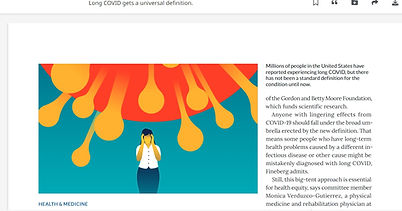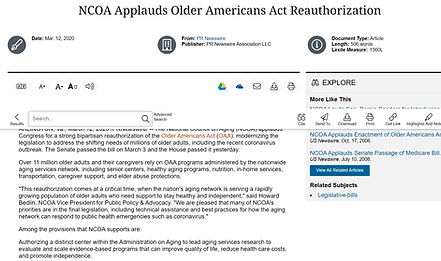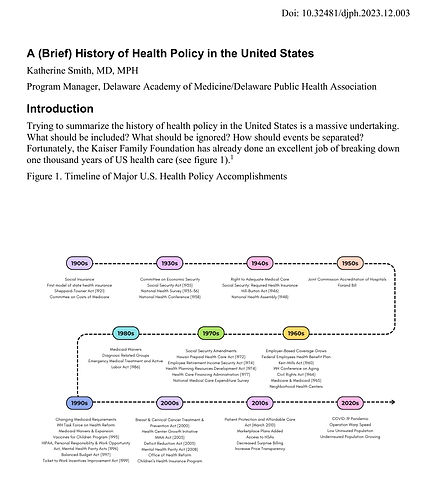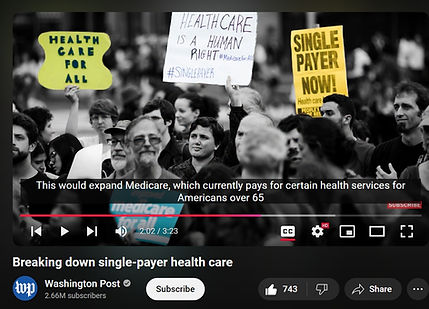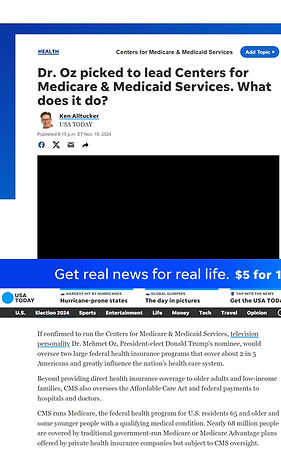Proper Care For Better Health
BUILT GROWTH
A STUDENT CAMPAIGN PROJECT
Media
In this portion you will be interacting with different sources, for example, Scholarly Publications, Health Policy, Science Research, Documentary/Films, and News videos which will be used to have a better knowledge of the background related to Universal Health. The focus would be on the United States along with the achievements and incorrect usage of our health system.
In the article, "Behind the Jargon Overutilization, Overutilized," Deborah and Jessica state, "how the Physicians, the insurance industry, policy makers, payers, and patients agree: the American health care system wastes money."
The overutilization word is used to better define all categories from the health system relating to the patients, payers, or providers.
Overall, how overutilization of health care has caused an improper usage from the Physicians, patients, hospital administrators, and moral hazard. In the article Deborah and Jessica mentioned data information focusing on health care services utilization across the U.S, but this data could be misleading or gathered improperly due to the numerous health organizations. For example, hospitals, and clinics.
Pros: Clinical decision making has led to shorter hospital stays and shift to prospective payment.
Cons: "Roughly $700 billion per year of U.S health care costs - a third of overall expenditures - are spent on unnecessary care."
Cons: Moral hazard as define involve people who take health risks due to insurance covering the medical costs.
By clicking on the image, it should lead you to the source which will have a panel that includes a portion of policy and strategies requirements related to women's, children's and adolescent's health.
In the Scholarly Journal, "Transforming Women's, Children's, and Adolescents' Health and Well Being Through Primary Health Care," it focuses on the importance role they contribute to society. So, in order for better health care the Universal Health would be consider the proper procedure. In the article it mentions how the WHO Direct-General wants, "radical reorientation of health systems towards primary care." For this to work there has to be changes involving preventive, promotive, and protective measures. Along with improving health literacy, community-based health services, nutrition, and mental health. Overall, the article is informative of the categories or systems that contribute to the health care.
Pros: "Primary health care is an approach consisting of three key components: integrated health services focused on primary care and essential public health functions; community engagement and empowerment. Along with multisectoral policy and action to address the broader determinants of health."
Pros: "This primary health care transformation must accelerate now, to ensure access to essential health interventions and have a lifelong impact on the health and well-being of future generations."
Science Research
By clicking the image, you will have access to the article which focus not just on the Universal Health usage but overall, where it has been implemented and the causes of where it is struggling at.
In the article, "The Promise and Peril of Universal Health Care," is an interesting source that mentions how UHC was developed and why. This involves the World Health Organization, the United Nations, along with civil societies. David, Alexander, and Ramnath focuses on the importance and beneficial role universal health could be successful. Some improvements fall within technical, economic efficient, social, and environmental determinants of health. Along with figuring out a financial cost achievement, and intensive training sessions for providers.
Pros: Reduce economic inequalities.
Pros: "A service coverage index that is useful for inter county comparison which includes reproductive, maternal, child health, infectious disease control, noncommunicable disease, and service capacity."
Cons: Universal Health would lead to rising cost of new health care technologies, and the growing share of their populations at the older ages."
To have access to the article click the image above. The source will provide you with a clear view of the long COVID and why it is still mentioned after the pandemic.
In the article, "Long COVID Gets a Universal Definition," by Tina H. Saey is a science research article that focuses on the struggle people are still facing with COVID-19. According to Tina, "the lack of standardization left many patients in the lurch without clear ability to be recognized for the condition that they have." Folks who are struggling with long COVID want to gain access to the proper care they need. The article mentions, "The National Academies defines long COVID as a medical condition that persists for at least three months after a COVID-19 infection." Overall, there is still no clear care plan on behalf of the provider which impacts the folks who contain long COVID.
Pros: "The National Academies calls for continued research to find diagnostic tools."
Cons: "There are no tests that reliably diagnose long COVID."
Cons: "Some people for example Doctors, or providers have dismissed the condition as being a mental health disorder."
Health Policy Organization
About NCOA: Its commitment is, "to improve the lives of millions of older adults, especially those who are struggling with living and health issues. It also provides solutions to improve health and economic security and strengthen government programs as we age." By clicking the image, it will take you to the article.
"NCOA Applauds Older Americans Act Reauthorization," this organization led to the reimplementation of the Older Americans Act (OAA) on March 12, 2020. A program that is considered very important for the U.S senior citizens. This policy was critical during the year 2020 due to the outbreak of the Coronavirus. As stated in the form, "Over 11 million older adults and their caregiver rely on OAA programs administered by the nationwide aging services network." This services network includes senior centers, healthy aging programs, in-home services, transportation, caregiver support, and elder abuse protections.
Pros: NCOA supports the service research to evaluate and scale-based programs that can improve quality of life, reduce health care costs, and promote independence.
Pros: "Fall prevention and chronic disease self-management education."
Pros: Protecting and providing a path for future investments in OAA programs which includes Senior Community Service Employment Program, to deliver workforce development opportunities to low-income older workers.
The article policy timeline for the United States is accessible by clicking on the image above.
In the article, " A Brief History of Health Policy in the United States," by Katherine Smith provides a chronological order of each Policy that was implemented in the U.S. health care. From the time frame of 2010-2019 is when the Patient Protection and Affordable Care Act was release by the House of Representatives making it a law. "On March 23, 2010, President Obama signed the Patient Protection and Affordable Care Act into law," according to Katherine. The purpose for the Affordable Care Act is for the poor individuals to fall within a Medicaid expansion. Along with personnel who are within the low to mid-range income and do not have access to insurance through their job. Once Donald Trump became President he to make a few changes on the health care policy. For example, a new Medicare Advantage Plans.
Pros: "Large businesses who do not provide their employees with health insurance or subsidies will face penalties."
Cons: During the COVID-19 pandemic, "Operation Warp Speed (OWS) played a role in selecting vaccine candidates for further study, studying the safety and efficacy of overlapping clinical trial phases to accelerate development, and reduce vaccine manufacturing challenges like costs, manufacturing, and distribution."
Cons: A graph image in the article divided by different categories could be misleading due to focusing on uninsured population that excludes the homeless group.
News Source
Click on the image to access the news video which provides a description of the Single-Payer Health system.
In the Washington Post video, "Breaking Down Single-Payer Health Care," the focus is to understand the difference between a more private coverage and a more public health care coverage. The source also implies how Republicans (Conservatives) want to adapt into a more private health care portion, but Democrats (Liberals) prefer to focus more on public health care coverage. In other words, with the public health care it emphasis as a "Single payer," also known as Universal Health coverage. Both private and public health care have their own separate critics. With private consisting of less insurance requirements for the individuals, health insurance companies, and employers. It would also minimize government subsidies and funding. On the other hand, public health care is view as "Health Coverage for All."
Pros: Bernie Sanders and some Democrats insist on a "Medical for All," proposal expanding it to Americans over the age of 65 and person with disabilities.
Con: In the video it states how 30 countries use some form of Universal health care which could be misleading information, since there was no mention of data or statistical analysis proving if the UHC is working or not.
Con: Theres's a good number of American who do not have health care. As stated in the article, "In 2016, about 28 million roughly 9% of the population were uninsured."
Con: The video shows a polling that could be misleading since the question is, "Is it the federal government's responsibility to make sure all Americans have health care coverage?" With 39% saying No and 60% saying Yes.
Click the above image to access the article, which provides more information about the role Dr. Oz will have in the Center for Medicare and Medicaid.
In the USA Today: US and Breaking News article, "Dr. Oz is picked to lead the Centers for Medicare and Medicaid Services. What does it do?" The article gives a breakdown of the different role Medicare and Medicaid are use in the health care. Medicare intend usage is for residents 65 years and older along with some younger folks with a qualifying medical condition. "About 68 million people are covered by traditional government-run Medicare or Medicare Advantage Plans offered by private health insurance companies," according to Ken Alltucker. Medicaid is a federal health program mainly use for low-income families that covers 72 million people. Overall, President Donald Trump elected Dr. Mehmet Oz for the Center for Medicare and Medicaid services in which he will oversee both Medicare and Medicaid.
Pros: "Another 7 million children were enrolled in the Children's Health Insurance Program as of July.
Pros: When Joe Biden was in office a, "2022 climate and health legislation known as the Inflation Reduction Act, Medicare was authorized to negotiate prices with pharmaceutical companies on certain number of medications."
Con: "Medicare announced negotiated discounts with pharmaceutical companies on 10 drugs prescribed to treat blood clots, cancer, heart disease, and diabetes. The price discounts won't take effect until 2026." This information could be misleading because it will either go through on 2026 or get push back.
Documentaries/Videos
The documentary is access on Netflix, and it will give you a more detail idea of what Maya and her family went through.
In the documentary "Take Care of Maya," directed by Henry Roosevelt involves a family and her daughter Maya who has been experiencing symptoms, of fatigue, fever, couch, burning sensation. In the States the parents try numerous hospitals, and providers to identify the problem. Since Maya mother is a nurse, she was able to locate Dr. Anthony Kirkpatrick he was able to identify the symptoms Maya was going through and diagnose her with Complex Regional Pain Syndrome (CRPS). Dr. Kirkpatrick has treated over 3,000 patients with CRPS, and the best therapy is Ketamine. It is a pain management medication. So, Maya had the Ketamine treatment which was successful until she relapse. Maya again was taken to the to the Emergency Room at Johns Hopkins All Children Hospital where the providers had no knowledge of CRPS. The mother tries to inform them about Maya care plan stating how Maya needs a high dosage of Ketamine. This issue led to Child Protection Services due to the hospital staff viewing the mom neglecting her child. In which Maya was under State custody. Maya was under custody for 87 days which led her mom to struggle with emotional and mental distress. This was a turning point for the family which led the release of Maya from the Hospital. Overall, with inadequate medical training it could led the patient being diagnose incorrectly, or cause family separation.
Pros: Beata Maya's mother kept documentations of every treatment, and every interaction Maya had with Providers.
Con: The Johns hospital could not determine if Maya was suffering from CRPS, but the family was billed for the three-month treatment Maya had at the hospital and the diagnose stated in the medical bill form was CRPS.
This led the family to have financial crisis.
By clicking the image, it will led you to the youtube video in which Bernie Sanders emphasis the importance of Medical for all.
In this YouTube video, "We Need Medicare for All," spoken by Bernie Sanders. His intentions are to inform the public of the issues United States has with health care. As stated, "We spend twice as much per capita compared to other countries."
Even so, that our life expectancy compared to other countries that do have a proper Universal Health system, ours is within the 76.1-year age range. While other countries with Universal Health is within 82.4-year age range. Some issues the American health care is struggling with involves corporations, pharmaceutical industry, a decrease in health care staff which includes Doctors, nurses, dental providers etc. Bernie mentions how, "1 out of 4 Americans cannot afford the prescription drugs their providers write."
The solution to all this issue would be the proper usage of universal health. In other words, Medical for all.
Pros: "Medical for all would improve and expand current Medicare to cover health care for every age range, and personnel." Decreasing the usage of out-of-pocket expenses.
Pros: A decrease of network services where the person gets assign a provider that fits their insurance coverage.
Cons: The health care system is a political topic which is divided by the different viewpoint both conservatives and liberals have on it.




